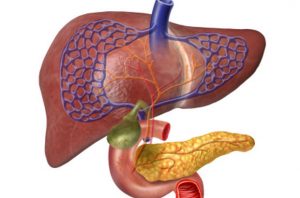
The below articles discuss treatments, breakthroughs, and prevention tips for fatty liver disease.
Non-alcoholic fatty liver disease, new treatment found in a study
New treatment for non-alcoholic fatty liver disease (NAFLD) has been uncovered in a study. The researchers found a new pathway in the liver, shedding light on a new potential means of treating NAFLD.
The researchers found that a protein TRPV4, part of the defense system of the body, can activate the release of nitric oxide. Why is this significant? Nitric oxide blocks the enzyme CYP2E1 that largely contributes to the progress of NAFLD. The protein TRPV4 has previously been found to help protect against cardiovascular disease. Continue reading…
Non-alcoholic fatty liver disease (NAFLD) risk can be lowered with exercise. NAFLD is becoming the most common form of liver disease in the Western world as rates of obesity continue to rise. NAFLD has long been associated with diabetes and obesity and there are currently no approved treatment methods for this disease. For this reason, it’s important to prevent NAFLD as best as possible which can be done by effectively managing diabetes and your body weight.
Weight loss is a known tactic to combat both obesity and diabetes. Weight loss if often recommended for NAFLD patients as a means to slow down disease progression. Aerobic and resistance exercises are effective for reducing liver fat and visceral fat. What is unclear is how much of exercise is required to start improving NAFLD. Continue reading…
Fatty liver disease and heart disease have been found to have a bi-directional association. The researchers found that not only can fatty liver disease increase the risk of heart disease, but the association works the other way around, too, meaning, heart disease can increase the risk of fatty liver.
Fatty liver disease cases are on the rise as obesity rates are climbing. Fatty liver disease has become the most common form of liver disease, affecting 20 to 30 percent of adults. Obesity is a risk factor not only for fatty liver disease, but for heart disease, too. Previous studies have found an association between the two conditions, but whether it was fatty liver disease that caused heart disease – or heart disease that caused fatty liver disease – was unclear. Continue reading…
Non-alcoholic fatty liver disease (NAFLD) is characterized by the abnormal accumulation of fat within the liver. When fat accumulates in the liver, it prevents the liver from performing its many functions, potentially leading to scarring and further damage. Complications associated with NAFLD include liver cancer, fluid accumulation, gastrointestinal bleeding, and mental changes.
Following a healthy NAFLD diet plan can help reduce the liver damage and slow down the progression of NAFLD. This is because anything we take into the body is filtered through the liver. Eating unhealthy foods further sickens the liver and contributes to further progression of the disease. Continue reading…
High-calorie diet, not sugar intake, promotes the progression of non-alcoholic fatty liver disease (NAFLD), according to research findings. The researchers conducted a double-blind study of healthy but centrally overweight men to compare the effects of two types of sugar – glucose and fructose – in two conditions: weight maintaining and weight gaining.
In the weight-maintaining period, men did not develop any significant changes to the liver, regardless of their diet (moderate-calorie vs. high-calorie diet). In the weight-gaining period, however, both diets produced equivalent features of non-alcoholic fatty liver disease. Continue reading…
Related: What causes liver pain after drinking?